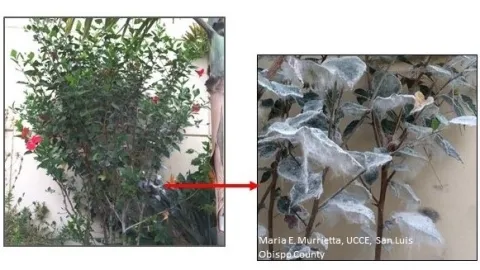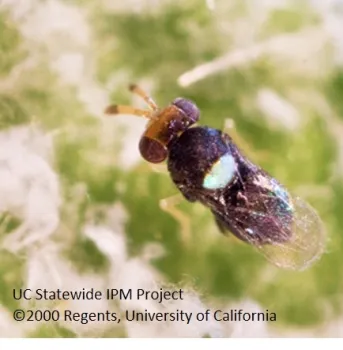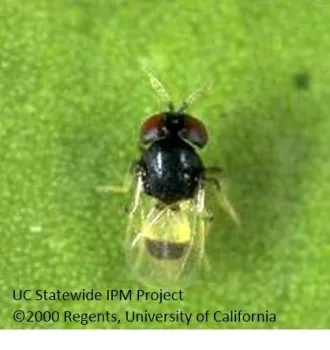
We're now seeing the aftermath of this long rainy season. The heavier than normal rain has given us velvety green hills carpeted with an abundance of wildflowers. But we cannot overlook the other less pretty things that benefit from a wet winter – lots of weeds and insects.
For now, we'll focus on insects. They're already showing up in a news-worthy fashion. KSBY did a feature story on whiteflies and spoke with UC Master Gardener Cathryn Howarth.
This story has been posted on various social media pages and people are wondering if this whitefly is a new pest, where it came from and what can be done about it. I wanted to follow up to fill in some of the gaps in information. So, I went to Cal Poly entomology professor, Dr. David Headrick who has done quite a bit of research on whiteflies over the course of his career.
Here's what he had to say after watching the news story.
"The whitefly pictured on hibiscus (in the news story) is giant whitefly which came to California from Mexico. It was first noticed in San Diego County in the early 1990s. Hibiscus is a favored host plant, but they also are seen on citrus, but more commonly on the landscape plant Xylosma. In the mid-1990s, a biological control program began with researchers at the University of California, Riverside. They successfully imported two beneficial species of tiny stingless wasps that feed exclusively on giant whitefly and achieved excellent control of giant whitefly."


"Giant whitefly and the two beneficial wasps (pictured above) all occur in San Luis Obispo County and normally the populations are all under good control. When the giant whitefly first invaded SLO county in the early 2000s, the populations were enormous and made the news then also. But the wasps soon brought whitefly numbers under control. However, in some years since then, environmental conditions have favored the giant whitefly and allowed them to outpace their natural enemies. Eventually, the wasps will catch up and population balance will be restored."
"There are many species of whitefly, most are native species that cause no serious harm to their host plants. The whiteflies that you see on broccoli, citrus, oaks, and poinsettias are all different species. Some of the invasive species of whiteflies, like giant whitefly, can indeed kill their host plants."
"As for management, spraying plants with the garden hose is a good approach when numbers are low."
Thank you, Dr. Headrick, for your insights.
UC Master Gardeners always recommend monitoring your plants regularly to catch pest populations before they become a problem. Whiteflies can be observed any time of day. Remember to flip over the leaves to look for evidence of nymphs and the waxy coating as pictured below. Insecticides, such as horticultural oils may provide some relief. However, direct contact with the insect is necessary to smother and kill them which is difficult to achieve, particularly for whiteflies that congregate under the waxy coating on the underside of leaves.

If you have questions about plant or pest issues, call the Master Gardener Helpline
Arroyo Grande: 805-473-7190
SLO Office: 805-781-5939
Templeton: 805-434-4105
Or email us at anrmgslo@ucanr.edu
Looking for more?
- Visit UC IPM for more photos and information: http://ipm.ucanr.edu/PMG/PESTNOTES/pn7401.html
- For more information about the early biological control program and findings -
UC Riverside research paper - http://www.nhm.ac.uk/resources/research-curation/projects/chalcidoids/pdf_X/BellowMe2000b.pdf
Cal AG article - http://calag.ucanr.edu/Archive/?article=ca.v051n06p5
- And if you really want o geek out, like I sometimes do, check out this catalog of introduced species - https://bugwoodcloud.org/resource/pdf/FHAAST-2018-09_Arthropod_Biological_Control.pdf

